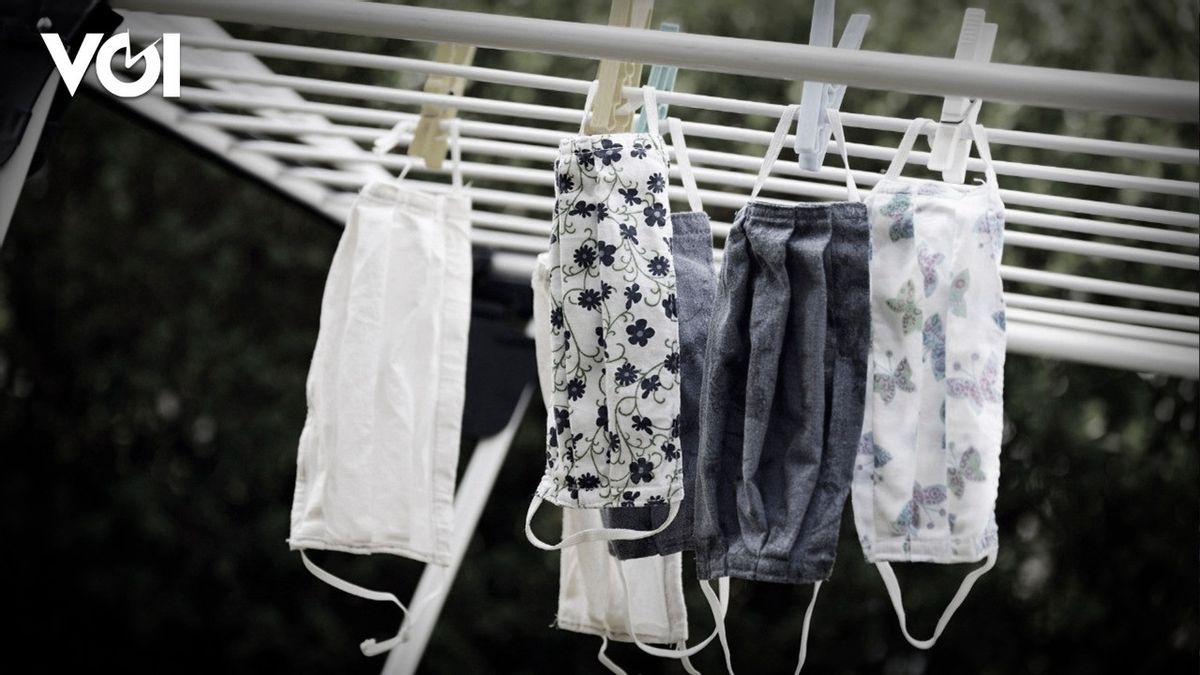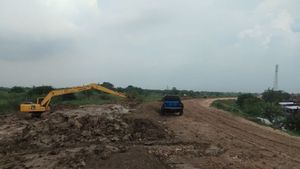
We have explored the chaos of managing medical waste from upstream to downstream. But as the saying goes: it is better to light a candle than to curse the darkness. This is the final article in VOI's signature Series, "Critical Medical Waste". About solutions to reduce medical waste.
There are many things we can do to reduce infectious medical waste amid the COVID-19 pandemic. Starting from the hospital to the household, everything can intervene.
As the World Health Organization (WHO) explains in its guidelines, there are many ways to significantly reduce medical waste, both from households and health facilities. The first is reducing resources, such as limiting purchases by having a more efficient method or not wasting.
But in the midst of a COVID-19 pandemic like this, it is difficult if you really have to limit the use of personal protection products. Wherever possible, WHO recommends buying products that can be recycled, either those that can be recycled inside or outside the plant. Careful separation of waste into categories also helps minimize the amount of medical waste.
Minimization of medical waste usually also benefits waste generators such as reducing the cost of purchasing goods and processing as well as waste disposal costs. For this reason, minimizing the disposal of hazardous waste by reducing its use is the right step.
No exception for health workers (health workers). There is a way, of course. Health workers need to be trained in minimizing waste and managing hazardous materials.
In addition, WHO also recommends safe reuse or recycling of medical waste. Some medical equipment used in a health care establishment may be reusable, provided it is designed for that purpose and can withstand the sterilization process. These items include certain sharp objects such as scalpels, syringes, glass bottles, and containers.
After use, these items are collected separately from items that cannot be reused. Then it is washed carefully and sterilized.

Sterilization must be carried out very carefully. Can with dry sterilization, namely exposure to heat 160 degrees Celsius for 120 minutes or 170 degrees Celsius for 60 minutes in a poupinel oven. For wet sterilization, exposure to steam at 121 degrees Celsius for 30 minutes in an autoclave.
In addition, the key to minimizing and effective management of medical waste is waste separation. According to the handling, treatment and disposal of waste according to its type, it reduces costs and does a lot to protect public health.
Segregation should be the responsibility of the waste generator, whether it be a household or from a health facility. Segregation must be carried out as close as possible to the place where the waste is generated and the place where it is stored must be maintained. Therefore, there are often rules that state that mask or glove marks or other protective equipment are placed in certain pockets to make identification easier.
In addition, the procurement department in a health facility must also consider the amount and toxicity of waste produced by a particular product before purchasing it. For example, products containing PVC, mercury, silver or other toxic materials should be avoided as much as possible. Equipment to medical devices that can be sterilized and reused safely should be a trend over disposable ones.
Choosing products that are lighter or easier to recycle can make a real difference to the balance between waste that can only be thrown away and those that can be sold for recycling. Health facilities should develop procurement policies taking into account waste minimization.
Low toxicity products must be tested to ensure they are reliable and easy to use. It is then added to purchasing policy through decisions of waste management committees or other decision-making structures.

One such policy is implemented in the United States (US). A coalition of health workers in the US Healthcare Coalition for Emergency Preparedness reports that California-based manufacturer of medical waste sterilization equipment San-I-Pak has started sterilizing single-use PPE with large autoclaves.
This method was initially used when many officers lacked PPE. However, this method continues to reduce waste, especially solid medical waste.
"California hospitals are trying to solve the PPE shortage curve," said Darrell Henry, Executive Director of the Health Care Coalition for Emergency Preparedness. "Sterilizing PPE on site in the hospital can help our country get through this crisis."
The test results show this large-scale autoclave is effective in sterilizing certain types of surgical masks, isolation gowns, and eye protection so that they can be reused. PPE made of cloth or linen, polycarbonate and polypropylene is determined to be suitable for steam sterilization in San-I-Pak equipment.
For cities or hospitals that do not have sterilizers, there is a mobile unit on the trailer that can be trucked to any location in a flat space the size of a shipping container. The unit can also be used to process PPE sterilization when there is a surge in patients, which usually dramatically increases medical waste.

In addition to health services, efforts to reduce infectious medical waste also need to be carried out in homes. Because during this pandemic, almost everyone wore PPE, from masks to disposable plastic gloves.
Since there is less medical waste from households from health facilities, minimization is easier. People can use cloth masks that can be used many times.
In addition, the application of disposing of disposable masks also needs attention. Like being separated from ordinary trash or cutting it so that it is not used by irresponsible people.
"To minimize what is recommended by the government so far we are still using repeated masks. Another thing is the implementation of disposing of disposable masks wisely," said the Executive Director of Wahana Lingkungan Hidup (Walhi), Tubagus Soleh Ahmadi when contacted by VOI.
Then when using a disposable mask, Tubagus said before saying it was important to damage it first. "After wearing (the mask) is torn or cut, packed neatly and then stored in a special box, this special box needs further attention from the government," he said.
As we discussed earlier, the Ministry of Environment and Forestry has issued an appeal to the community if the waste used for independent isolation is treated like B3 waste. Meanwhile, for medical waste from households, local governments should provide boxes or boxes for mask waste, which are also provided in public spaces.
Follow This Issue Series Writing: Critical Medical Waste
The English, Chinese, Japanese, Arabic, and French versions are automatically generated by the AI. So there may still be inaccuracies in translating, please always see Indonesian as our main language. (system supported by DigitalSiber.id)










